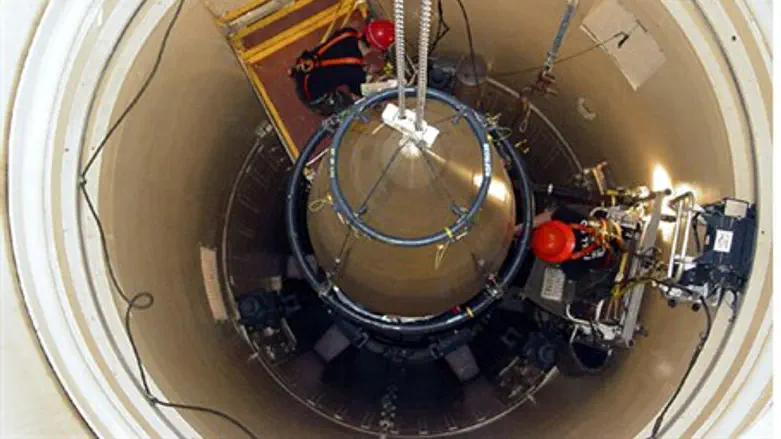
A new study from the Washington-based Center for Strategic and International Studies (CSIS) warns of dire consequences if the US does not dramatically change its nuclear weapons policy in the coming years, reports the Washington Free Beacon on Tuesday.
Lead author Clark Murdock, a strategic planning and defense expert, warned in the study entitled "Project Atom" that American foreign policy between 2025-2050 will be bogged down dealing with rampant global nuclear proliferation if dramatic changes are not made immediately.
"The value of nuclear weapons as a ‘trump card’ for negating US conventional power was enhanced by the US invasion of Iraq in 2003 to prevent Saddam Hussein from acquiring a nuclear weapon," Murdock writes. "If the United States apparently believes that it can be deterred by an adversary’s nuclear weapons, why wouldn’t a nonnuclear ‘regional rogue’ want one?"
According to the argument, "rogue" states estimate that they will be able to defeat the US's conventional military power by developing nuclear weapons, and therefore they will push forward on nuclear programs to gain international clout and power.
The warning is all the more relevant as North Korea has achieved a nuclear arsenal even after signing a nuclear deal with the US in the 1990s, and as a deal with Iran is set to be sealed by a June 30 deadline in the coming days.
Murdock calls on the US to modernize its nuclear arsenal and likewise obtain enhanced tactical nuclear capabilities so as to maintain an edge and deter rival or rogue states from pursuing the path of proliferation.
The expert warned that if the US does not make the policy changes, between 2025 and 2050 two major developments are likely to occur on the world scene. First, the US will lose its deterrence ability as nuclear proliferation abounds, and secondly more than 11 nuclear powers will emerge after 2030.
Surpassed by Russia and China?
Murdock noted that Russia currently has the upper hand in terms of non-strategic nuclear force, and called on the US to develop small-scale missiles and other tactical nuclear weapons to confront this threat.
"US nuclear forces were designed for a global conflict involving the exchange of thousands of high-yield weapons, not limited exchanges of low-yield weapons," writes the expert. "Since most US nuclear response options are large, ‘dirty,’ and inflict significant collateral damage, the United States might be ‘self-deterred’ and not respond ‘in kind’ to discriminate nuclear attacks."
Aside from Russia, co-authors of the study Barry Blechman and Russel Rumbaugh warned that China will also be a major threat in the coming years, a warning strengthened by recent Chinese tests of a hypersonic vehicle capable of defeating US defenses and delivering a nuclear strike.
The two wrote, "given its 20 years of investments in building a more modern military and continuing economic growth, China could plausibly threaten the United States’ ability to conduct specific military actions in regions near China’s coasts within the next several decades. If realized, such threats could jeopardize America’s ability to fulfill its commitments to defend certain allies."
Indicating the US's awareness of the increasing nuclear threats warned about in the new study, it was revealed in April that the Pentagon reopened the Cheyenne Mountain Air Defense facility, which was closed in 2006.
The move was seen as a response to the threat of a nuclear weapon being detonated over the US and causing an electromagnetic pulse (EMP) disabling America's ability to defend from secondary nuclear strikes, since the facility is built to withstand EMP strikes.